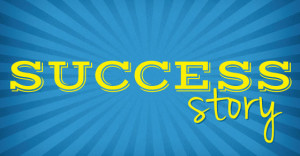Happiness: Life on the Other Side of Pain
 S.A. is 24 and came to the Optimum Performance Institute In August of 2013 after her fourth suicide attempt since the age of eighteen. Her most recent in-patient Clinic recommended she come to OPI as many of their patients had experienced positive long-term recoveries from their time at OPI.
S.A. is 24 and came to the Optimum Performance Institute In August of 2013 after her fourth suicide attempt since the age of eighteen. Her most recent in-patient Clinic recommended she come to OPI as many of their patients had experienced positive long-term recoveries from their time at OPI.
A lot can change in a year. S.A is optimistic and her voice upbeat. Most would find it hard to imagine that this enthusiastic young woman has spent years battling depression. “I came to OPI because I had many suicide attempts… The last one was…” She takes a breath. “It was just a really serious attempt.”
TRIGGER WARNING
Last May, she drove her car away from her friend’s place in Tuscan, Arizona and methodically went through her suicide plan. She had visited her friend, hoping he would cheer her up. And when that didn’t work, she felt there was no hope of feeling better. “That’s when the plan really went into action.”
She parked on an anonymous street of a city far from home. “I turned my car into a death trap. I took a long plastic hose that I bought at Home Depot. I attached it to my exhaust pipe, and put the other end through the driver window and taped it up and started the car. I only survived because someone drove by and saw what was happening. I didn’t stop it. The police and the fire department had to break into my car to get me out of it. I was just…” she pauses.” And that’s why I have been in such a long and detailed recovery.”
TRIGGER WARNING END
The experience was a wake-up call for S.A. and her parents and they decided they would go to any length to ensure S.A.’s wellness. “I had tried every kind of treatment including Electric Shock Therapy. It was pretty hard-core… I had been going to therapy. Even when I was able to stabilize, I would fall into the pit of depression over and over. So at OPI I was trying to build a skillset that I could use to keep from falling into that pit again.”
And OPI has done just that. S.A. believes OPI’s integrated and holistic approach has made all of the difference. She has a life coach, a therapist, a nutritionist, and they all work closely together. “(They) all communicate with each other. We make plans together and really coordinate things, which (has) made my progress really last. And it has really made it strong.”
And there’s been some pretty dramatic progress. Today S.A. is getting treatment for her eating disorder. She’s learning to cook. She’s taking classes at a nearby university. She has come out of the closet with her parents. She has made friends and explored the LGBT community in Los Angeles. She has a girlfriend. She takes Zumba. “Working with the team, I started to learn there is more to life than studying all the time. And branching out I learned—there are things that make me happy like music and singing and piano… And (I learned) to make them part of my goal, of just being happier. Today happiness is a top priority.
And not every moment is easy. Yesterday, S.A. felt sad. But today she has tools for dealing with depression. She texted Emily, her therapist, ”I’m having a hard time.” She realized she was feeling scared and stressed and took a moment to acknowledge the feelings. And then her therapist directed her to do her “self-care.” It’s a customized plan that she and her therapist have worked on for the moments when she feels down. “I went on the treadmill for half an hour and then did some random interpretive dance… And then I did some comedy therapy, which for me is watching an episode of the Colbert Report … and I made myself a nice dinner. And then I wrote back to Emily that I was feeling so much better.”
All of this is a new skillset. And as she noted, this particular routine wouldn’t work for everyone. It is one she and her therapist have worked on by trial and error. There were plenty of things that didn’t work. For example, saying positive statements felt phony. S.A. and her therapist have turned feeling good into a science.
Today S.A. lives near OPI as she continues to receive outpatient support through the Intensive Outpatient Program. “I plan to stay in California. I plan to keep going with school. I hope someday to be a therapist myself. And I feel like I have had at least a tiny bit of experience with that world, so I’d like to share what I’ve learned with other people and help others.” She’s refined what kind of psychology she wants practice. “I wasn’t sure if I wanted to do clinical or experimental psychology— and now I just know that I want to work with people because I think I would be the most help that way. Because that’s the most help I got with Emily my therapist and Missy, my life coach and working with them one-on-one is how I made the most progress. I want to help other people make progress that way.”
A lot can change in a year. And S.A. doesn’t want fast change. She wants the kind of change that comes slow and sticks around– the kind of change that comes from burning your food, and making dishes that taste bad, and playing with the ingredients until you get the recipe right. S.A. talks about her friends and classes, and all of a sudden I recognize the tone of S.A.’s voice. It’s the tone of happiness. Happiness can’t be faked. And S.A. is happy. It doesn’t mean she doesn’t feel pain. She’s felt pain and she will feel it again. But today she knows that there is something on the other side of pain.
